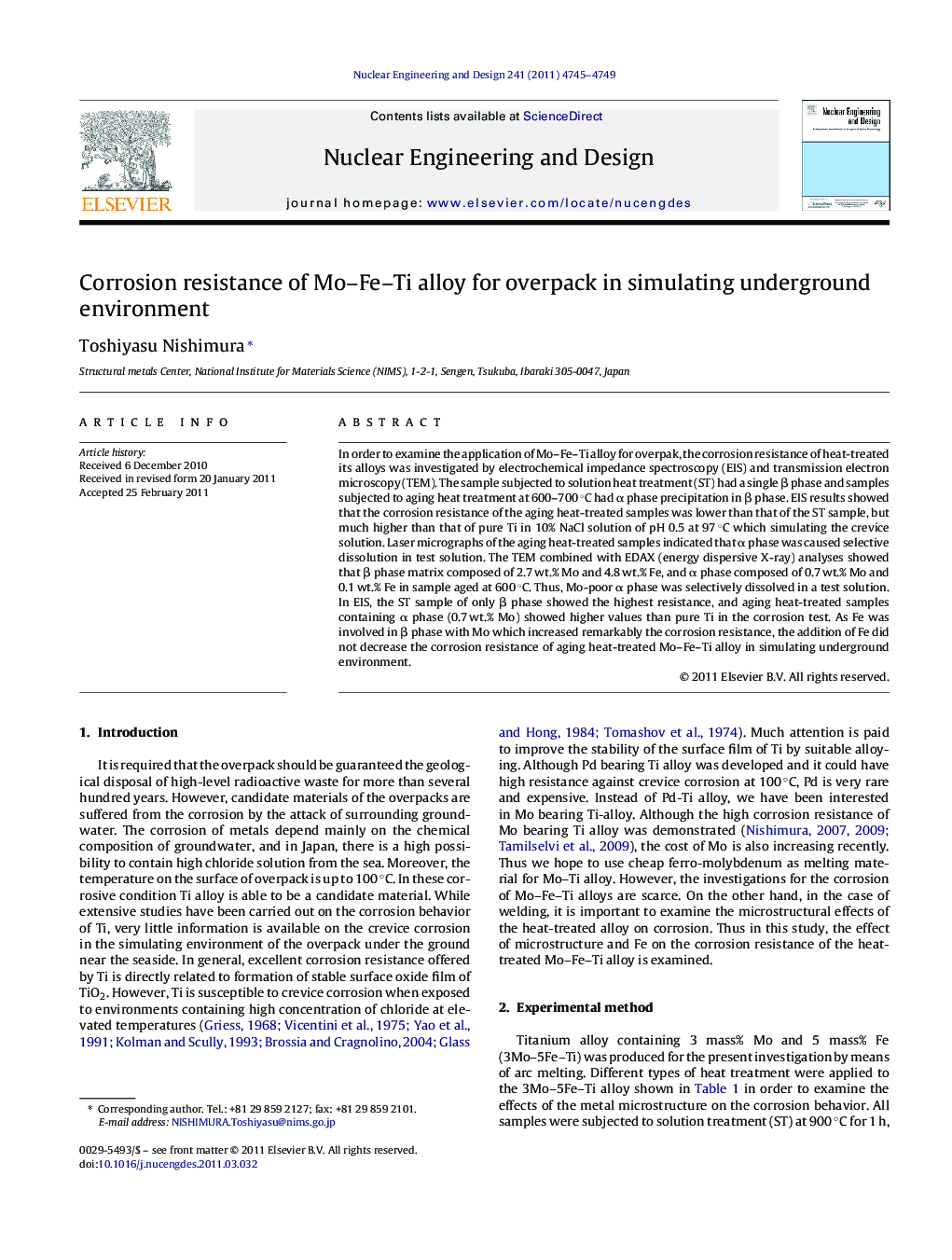| Article ID | Journal | Published Year | Pages | File Type |
|---|---|---|---|---|
| 297584 | Nuclear Engineering and Design | 2011 | 5 Pages |
In order to examine the application of Mo–Fe–Ti alloy for overpak, the corrosion resistance of heat-treated its alloys was investigated by electrochemical impedance spectroscopy (EIS) and transmission electron microscopy (TEM). The sample subjected to solution heat treatment (ST) had a single β phase and samples subjected to aging heat treatment at 600–700 °C had α phase precipitation in β phase. EIS results showed that the corrosion resistance of the aging heat-treated samples was lower than that of the ST sample, but much higher than that of pure Ti in 10% NaCl solution of pH 0.5 at 97 °C which simulating the crevice solution. Laser micrographs of the aging heat-treated samples indicated that α phase was caused selective dissolution in test solution. The TEM combined with EDAX (energy dispersive X-ray) analyses showed that β phase matrix composed of 2.7 wt.% Mo and 4.8 wt.% Fe, and α phase composed of 0.7 wt.% Mo and 0.1 wt.% Fe in sample aged at 600 °C. Thus, Mo-poor α phase was selectively dissolved in a test solution. In EIS, the ST sample of only β phase showed the highest resistance, and aging heat-treated samples containing α phase (0.7 wt.% Mo) showed higher values than pure Ti in the corrosion test. As Fe was involved in β phase with Mo which increased remarkably the corrosion resistance, the addition of Fe did not decrease the corrosion resistance of aging heat-treated Mo–Fe–Ti alloy in simulating underground environment.
► Aging heat-treated Mo–Fe–Ti alloy showed lower corrosion resistance than solution treated one, but much higher than pure Ti in EIS measurement. ► As α-phases showed lower Mo content by TEM, they were preferentially dissolved from base metal in the corrosion test. ► As Fe was involved in β (b)-phase with Mo which increased the corrosion resistance, the addition of Fe did not decrease the corrosion resistance.
